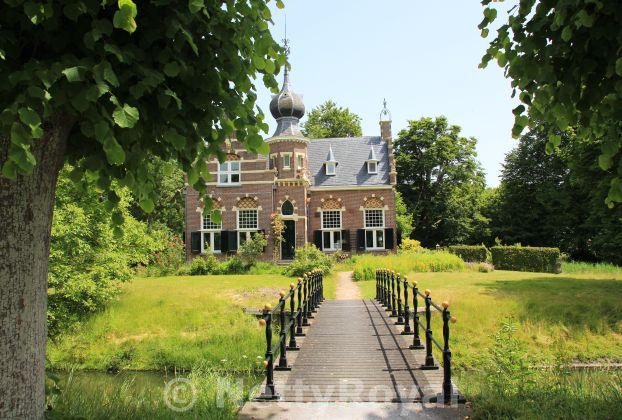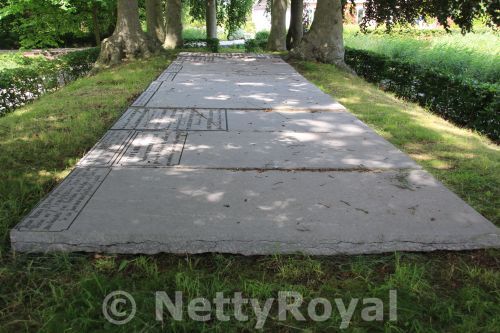Although I still haven’t seen all noble estates in the province of Groningen, on Saturday I went cycling in the province of Friesland next door, where manors are not called “borg” like in Groningen, but “state”. As I wanted to visit the grave of my great-great-grandparents in Stiens, north of the capital city of Leeuwarden, I decided to take my bike with me. Between Leeuwarden and Stiens there are two noble estates: the Dekemastate and the Martenastate. Let me introduce you to the Martenstate in Cornjum (Koarnjum) first.


The old Martenastate was the residence of the Friesian noble families Martena, Van Burmania and Vegelin van Claerbergen. About 1400 Sytze Martena lived here. After the old estate had been destroyed in 1584 a new and large building with wings was built on the same spot. The last owner, Duco Martena van Burmania Vegelin van Claerbergen (1859-1894) left his neglected estate to the church deacon of the small village of Cornjum.
Unfortunately they decided to demolish the old estate in 1899. The Leeuwarder architect Willem Cornelis de Groot in 1900 designed a new house: a lovely miniature castle in neo-Renaissance style. He made use of some nice parts of the old house. The L-shaped house is only one storey high and has detailed stepped gables and even a tower with an onion-shaped spire. The tortoiseshell lions and the alliance coat of arms on the wall dated 1687 are remains of the old estate.


Not all the old remains have however gone. The gate is from 1620 and is the entrance to the park, but actually comes from the demolished Landschapshuis in Leeuwarden. It was only placed here in 1955. On the edge of the park one finds the burial mount of the family from 1809, with graves of many inhabitants of the castle.
Since 1966 the house, the park and its buildings are owned by the Martenastate Foundation. While the house is a private residence, there is a campsite nextdoor. And in the Túnmanswente (gardener’s house) one can find a nice tea garden, which unfortunately was closed when I visited, and a B&B.
However it is the park that is best known, although I must admit I didn’t see much of it. The romantic park with elements of an English landscape garden is attributed to Roodbaard. It is one of the richest stately gardens in the Netherlands. Some trees are over 300 years old. The organisation It Fryske Gea contributes to the green management of the park.
The park is known for his “stinzenplanten”, spring flowers at historic locations that grow semi-wild in historic landscape gardens. Many species are not native to the Netherlands. The plants bloom from February till mid-May. The warning at the start of the walking paths however is clear: “Don’t pick flowers and plants or dig them up!”

Misschien brengt dit verhaal mensen op een idee om deze plaatsen ook eens te bezoeken. Mooi verslag! Je moeder